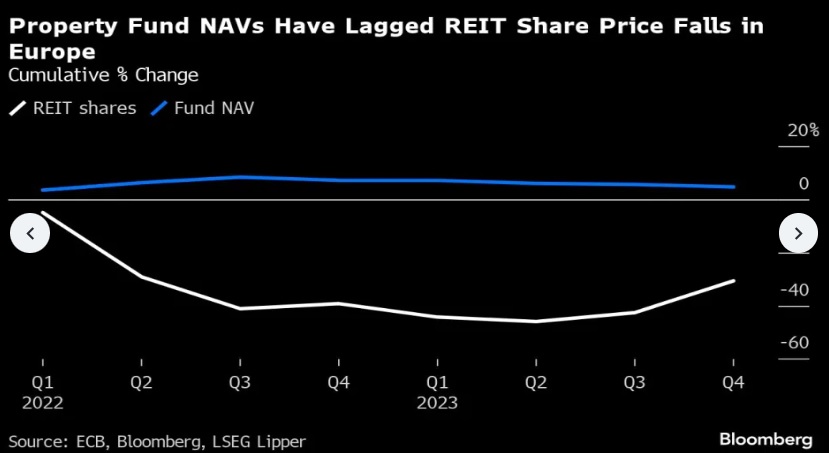“Exposures are not evenly spread across banks, and a tail of smaller, specialized banks with larger exposures” may “experience stress,” according to the report. The researchers pointed to a rise in non-performing loans as evidence of the worsening creditworthiness.
The ECB has been studying the risks that the CRE downturn is posing to banks after a downturn triggered by rising rates. Earlier this year, the regulator found widespread issues in how lenders value the collateral underpinning loans to business real estate, which could lead them to underestimate their vulnerability to a property crash. However, the sector is probably too small to threaten the solvency of the banking system, the researchers found in the paper.

The watchdog also published a linked study on property funds, which have been struggling to find buyers for their offices after their values plunged during the pandemic, forcing them to sell off housing and warehouses to meet redemptions. That’s left them even more exposed to the most battered part of the market. Some have also considered adding leverage to avoid revaluations of the assets and potential fire sales, Bloomberg News reported in July.
About 5.7% of the loans to these real estate investment funds have already soured, compared with 1.4% of CRE-related lending to firms, the study found, citing AnaCredit data.
“Lending to REIFs exposes banks to losses” when markets are stressed “and can create feedback loops between banks and funds, with risks exacerbated by risky lending practices,” according to the paper. Banks could be on the hook for losses as 18% of their loans to REIFs in the euro region are unsecured, the researchers found.
(source: Bloomberg)















